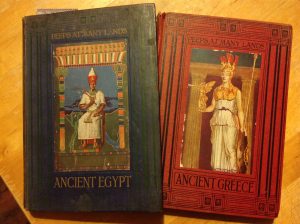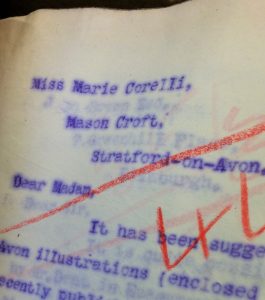In late June, members of the archive and library team at UMASCs travelled to Milan for staff training under the Erasmus+ scheme. The aim of the trip was to visit various institutions in Milan and the surrounding area which hold similar special collections to University of Reading Special Collections. This was in order to provide members of staff with the opportunity to reflect on our procedures and assumptions in order to improve the service at the University of Reading, including both access to collections and collections management.
Collections that we aimed to visit as part of our itinerary were the Fondazione Mondadori and the University of Milan’s APICE archives and library.
Our contact in Milan had been a visiting academic in the Modern Languages and European Studies department for six months and had contributed to both an international conference and teaching sessions using material from the archives here at Special Collections. At this conference we were invited to visit the APICE archives, who later confirmed that they would be happy to host a visit from us.
The first stop on our trip was to the Fondazione Mondadori. Mondadori is, and has been for quite some time, the largest publishing house in Italy. The Mondadori family established the archive in order to preserve their personal history and their work; however, the collections are not solely from the firm. They collect material relating to them from translators, authors, readers and more.

Hearing from staff at the Fondazione Mondadori about their collections
We were introduced to the director, and had in-depth descriptions of their services from the archivist and librarian. As the firm is still very much active we were informed they receive a delivery every week of new material.
A particularly interesting aspect was the use of the collections for teaching. The Fondazione co-run a masters degree in publishing with the University of Milan, classes are held at the archive and modules are taught around the collections. They have the use of a dedicated teaching space/computer lab for this purpose, in addition to a reading room for external researchers.
As part of a larger organisation they have a strong public engagement profile which includes releasing publications about their collections, and books telling the story of authors as seen through the archival material. Additionally, they have a whole institution dedicated to public engagement which is located much more centrally in the city. This is the Laboratori Formentini, which was our next stop.
The Laboratorio was opened in 2015 and is in a building owned by the city council who wanted to highlight Milan’s history of publishing. They host events, exhibitions, meetings/conferences for both the public and corporate groups, an example being Mostro, a graphic design camp. Much like we have in our reading room and open access corridor, they have hung reproductions of posters and archive material in their hallways.

One of the exhibition spaces at the Laboratori Formentini
Like the Fondazione they release publications; these detail the proceedings of events that have taken place.
On the second day our chief stop was at the APICE – the Archivi della Parola dell’Immagine e della Comunicazione Editoriale. It was founded in 2002-2003 by a former chancellor of the University of Milan who had an interest in publishing history. Our contact had arranged for us to meet the librarian and archivist who informed us they have 90,000 volumes in the library and 2.5km of archive collections. 1km of this is the University History Collection containing about 46,000 student files and is not online yet. They are hoping to launch this database to coincide with the 100th anniversary of the university in 2024. Here in Reading we also hold a large University History Collection and have our 100th anniversary approaching in 2026!

Viewing some book cover artwork by John Alcorn, held by the APICE
Many of their library and archive collections are very similar to ours and mainly date from the 20th century. They have a great strength in their futurist collection which attracts a lot of international interest.
Medicine and gynaecology were big areas of research in Milan for many years and so they have a few related collections from former professors, as we do too.
Regular seminars and conferences focusing on the collections are organised, with a publication always following after the latter.
We were shown their new website which had just been launched less than two weeks ago. There has been a push for digitisation of photographs and illustrations, including from those who have deposited their collections.

Staff being shown the new website for the APICE
We were taken to their closed storage and shown some of the library collections, which included some very early printed material.

Staff being shown a storage area for the APICE collections
After this we went to the central campus of the University of Milan and met the director of the APICE who expressed interest in our commonalities and hoped for further contact between the universities.
This marked the end of our formal visits. Staff then chose to visit either the Pinacoteca Ambrosiana or the La Scala museum, and on the final day visited the Museo Nationale Scienza e Tecnologia. These were great opportunities to see a variety of museum displays and methods of interpretation.
We are very grateful to Erasmus+ and our UMASCs colleagues for this rewarding and inspiring trip.

Taking in an audio-visual exhibit about agriculture




